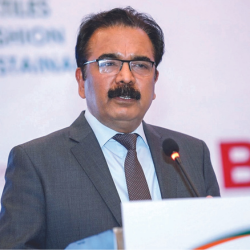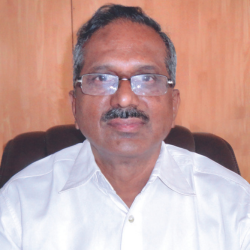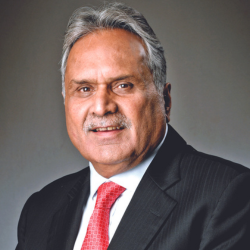
The textile and garment sector witnessed a very dry investment season in 2023 as demand for clothing items fell globally. Moreover, higher costs of production due to increased prices of raw materials, transport cost, the volatile exchange rate of the local currency against the US dollar, and the government’s restriction on imports were other reasons for the slowdown in investment in the sector.
The year 2023 was one of the toughest for global textile and garment industries as the major consumer markets like Europe and the USA reduced import of clothing items substantially due to historic inflationary pressure. For instance, the USA’s overall garment imports declined by 24 percent in January-December of 2023. The lower demand from the major consumer markets also affected investment in the domestic market.
However, the situation is expected to improve from the second half of this year as the global economic situation is improving. The increasing demand for premium quality clothing items, rising number of schemes launched by the Government of India and the growing ethically sourced sustainable materials represent some of the key factors driving the market. Looking forward the market is expected to grow at (CAGR) of 14% during 2024-2028.
In This post, we are covering the views of the various Textile Associations

Rajesh Masand
President, CMAI
“In retrospect, 2023 proved to be a disappointing year for the apparel industry, primarily due to a notable shift in consumer preferences away from apparel products following the post-COVID surge in 2022. This shift resulted in a restricted consumer uptake from retail stores for approximately six to nine months. Consequently, most brands and retailers experienced either stagnant or declining growth throughout the year. The marginal growth witnessed in certain brands primarily stemmed from an expanded dealer network rather than same-store growth. Despite this, a slightly more positive outlook is anticipated for 2024, especially after the initial summer months. However, current bookings do not indicate a favorable trend, as retailers are still holding significant inventory. It is anticipated that once this surplus inventory diminishes, the bookings will return to normal levels. However, it is estimated that 2024 will be a stabilizing period and not the year to expect a substantial surge in apparel sales.”
Two of our biggest weaknesses are our narrow product base, and our poor productivity. Unless we increase our product base to include MMF based Garments, winter wear, Sportswear, Performance Clothing, etc., and alongside improve our productivity, we are unlikely to make any significant dent in the Global Trade. We will also need to quickly get on the newer requirements of the International Buyers such as Sustainability, ESG, etc.
I think the Government has extended fairly good support to the Industry, and we will need to learn to stand on our own feet and not continue depending.

Mithileshwar Thakur
Secretary General, AEPC
The Year 2023 was a year marked with turbulence and upheavals, especially with disruption in the supply chain on account of the Israel-Ukraine conflict, Israel-Hamas war and Red Sea crisis. On the top of it, there has been a recessionary trend across major garment importing countries resulting in the decline in demand impacting online and retail sales of apparel adversely.
Overall export performance for 2023-24 consequently, belying our earlier expectations, has witnessed de-growth with biggest dip in April, June and July 2023. The sharpest decline in RMG import demand has been witnessed in the USA and some prominent garment importing countries like Germany in the EU. The only silver lining has been the increase in exports to countries like Australia and Mauritius with whom FTAs were concluded in the recent past.
Past trends however suggest that exports generally pick up during the last quarter of every financial year. We can thus hope that we should be able to reach last year’s number of USD 16 billion plus. We hope that 2024 will be a good year provided issues such as prevailing wars ends, logistic issues and associated costs are under control and availability of demand from the big markets revive quickly.
We must quickly align our products with the global demand. Our export basket does not align with global import pattern of apparel products. India does not have adequate production of MMF garments like activewear, sportswear or safety wear and there is a dire need to diversify our products basket in these segments.
Another issue is, India either does not produce enough trimmings and embellishments (tags, labels, stickers, belts, buttons, linings, inter-linings, etc.) or does not have enough suppliers having approval rating from their garment buyers. Therefore, Indian garment exporters are necessarily dependent on the import of such articles to execute the export order. Heavy dependence on import of such items escalates the input costs rendering exports of Indian garments further uncompetitive. India is losing out big time to Bangladesh and Vietnam in garment exports primarily on account of their competitive pricing. These critical issues if adequately addressed will provide significant edge to Indian RMG exports.
To be honest, the current Government has been extremely helpful to the textile and apparel industry. Production linked incentive (PLI) will attract huge investments in MMF value chain leading to much needed boost in the production of MMF fabrics and garments, thereby diversifying our export basket. PM MITRA parks will integrate the fragmented textile value chain and ongoing FTA negotiations with EU and UK will hopefully provide level playing field to Indian apparel exports vis-à-vis competing countries like Bangladesh and Vietnam.
We have taken up with the Govt. for introduction of second version of PLI for all types of garments, irrespective of fibres, with a lower investment criterion. That will go a long way in attracting investment in the garmenting segment and help us achieve economy of scale. The interest equalisation rates were brought down from 3% to 2% for non-MSME manufacturing exporters. High interest rates leading to increased cost of capital have been a perennial problem for the Indian industry. We have escalated this issue and have requested to raise the interest equalisation rates to 5% for labour-intensive sector to render it cost competitiveness.

N. Vivekanandan
President, SIIMKA
Apparel exports from all over the nation has decreased drastically in the year 2023. The slowdown is prominent among Tirupur Exporters. The decline in Exports was due to lower demand for clothing in the US and European market. High inflation across the developed world has reduced the consumer purchasing capacity. The US recessions as well as the war in Ukraine are pulling down the trade. Due to low orders, almost all of Tirupur’s factories are operating at 50% to 60% capacity. I hope the global scenario will change in 2024.
In the Indian textile and apparel sector, most of the manufacturing units have small capacities with limited resources and low manufacturing efficiencies. The overall productivity levels in this sector, especially in apparel manufacturing are relatively low compared to China, Vietnam and Bangladesh. To bring them at par with global counterparts there is a need to facilitate rapid growth and modernization of existing firms with potential for success. In addition, product diversification in garments made with Manmade fibre is the need of the hour. 65% of all garments made globally are from MMF. Diversifying from cotton to MMF is important for the industry to move up the value chain. The recent initiatives on skill development through the Textile Skill Sector Council in partnership with Industry need to be scaled up vigorously.
After implementation of GST, which reduced the import duties on textiles have allowed fabrics and apparels from competitive counties to be flooded in the Indian market. As India is having “Free Trade Agreement” with Bangladesh and Srilanka, it is necessary to increase the import duty on textiles of these nations to prevent cheap garments produced from China to be routed through these countries. We also request the Textile ministry to implement the PLI scheme for MSME sector and also restore the export incentives like draw back rates. We also request the Government of India to implement long pending proposal to construct ESI multispecialty hospital in Tirupur.

K.M. Subramanian
President, TEA
Tiruppur has been the hub of cotton hosiery garments. It contributes to 55% of the Indian Knitwear apparel export. What was a modest beginning of Rs. 9 cr in 1984, has grown to an astronomical figure of Rs. 34,500 cr in 2023. Apart from this export, Tiruppur also caters to almost Rs. 30,000 cr of knitwear garments for the domestic market. The Tiruppur cluster employs 10 lakh people directly and indirectly. Of this 65% are semiliterate women with a rural background. For almost 5 decades, Tiruppur has been relying on cotton apparel production, possibly because India is the second largest producer of Cotton in the world and Tamil Nadu, specifically the Kongu belt was harvesting and ginning a lot of cotton a few decades back. More than 55% of the Indian cotton spinning capacity is in Tamil Nadu.
Tiruppur Cluster – A Sustainable Cluster: Sustainability is the most discussed topic globally now in the whole supply chain in the Fashion Industry. After the European Union’s announcement of Carbon Border Adjustment Mechanism (CBAM), the importance of Environment Sustainability picked momentum. Since CBAM would levy a carbon tax on imports into Europe on products made from processes which are non-green, it would have far-fetching effect throughout the production line.
Realising this long time back, the Tiruppur Cluster, under the able leadership of our Honorary Chairman Padma Shri. Dr. A. Sakthivel, made huge investments to ensure that Tiruppur cluster becomes an ESG compliant cluster much ahead of any other competitor. Remarkable work has been done in achieving ZLD in processing units, investing in Green Energy (both wind and solar), attaining circularity, mass tree plantations, rainwater harvesting and conservation of energy and water. Going forward, we will handle all challenges and achieve in establishing that Tiruppur is a SUSTAINABLE CLUSTER.
Favourable market conditions: In view of the macro level phenomenon, “China plus” all international brands and Retail Chains have decided to avoid investing only in China and diversify business into other promising developing economies such as India.
The recent Labour unrest in Bangladesh has also had an impact on the leading brands to continue their dependence on Bangladesh. The fact that Bangladesh is set to lose their duty-free status shortly, would also be an important factor in favour of Indian manufacturers. Free Trade agreement with Australia being already signed and with UK and EU in the finalisation stage would also be in our favour.
Challenge ahead: In the recent past, the order levels of Tiruppur have been stagnant and not shown any significant growth. The main reason attributed to this is the increase in competition in cotton from other manufacturing countries. Past few years have seen huge investments both local and FDI in countries like Bangladesh, Vietnam, Cambodia, Pakistan and Sri Lanka to improve the quantity and quality of cotton knitwear production. They have all stabilised in the export of cotton knitwear apparels and some have even surpassed Tiruppur in that segment. All these countries have a significant price advantage over Tiruppur in view of the incentive given by their government and the duty-free status they enjoy in the importing countries.
The other important and more relevant reason for the stagnation is the significant shift from Cotton to other cellulosic and Man-Made Fiber (MMF) in the fashion industry of US and Europe. Currently, it is estimated that of the total apparel market, Man Made Fiber accounts for almost 70% leaving only 30% to traditional old Cotton.
Till recently, Tiruppur had been focussing totally on Cotton and failed to explore into other avenues such as Man-Made Fiber based garments. Polyester, Rayon, Modal, Bamboo, Tencel, lyocell are the few among the manmade fibers that could be easily developed and have great scope. Advancements made in filament yarns such as micro polyester and nylon have made them most suitable for “Activewear” and “Athleisure” garments. Tapping this opportunity would have multi-faceted advantages to the industry.
• Steady year-on-year growth.
• Year-round work and employment instead of the current seasonal pressures
• Control on the volatility in the cotton yarn prices
The world of fashion is changing constantly with new ideas and concepts and it is high time, Tiruppur realizes the importance of MMF and reap the benefit.
Adaptability to MMF: The current Tiruppur infrastructure is capable of handling manmade fabric production as the available knitting, processing, and finishing units can be used for Man Made Fiber fabric and garment production. But it would certainly need a few modifications and technology up gradation.
Widespread awareness and education must be made available to the Investor Community in Tiruppur on the advantages of all new investments in MMF sector. This would help in building capacity in MMF Garments which commands a major share in the World Market today. Organizing technology exchange missions with the pioneers of MMF production in Taiwan and Korea would go a long way in enhancing and adding value to establish MMF based production in Tiruppur. Business Leaders should impress upon their fellow industrial friends the importance of MMF based yarn, fabric and apparel production. This would create an Eco system for MMF at par with the existing cotton Eco System in the coming years thus making this region a great potential sourcing hub for MMF and Technical Textiles apart from cotton. New ideas, going with global flow, and fast fashion would put back the growth history of Tiruppur and we can foresee a huge potential and this region would evolve as a global hub for all kind of MMF Yarn, Fabric and Apparel.
Our region is steadily developing capacity and capabilities to design and develop such MMF products. A state-of-the-art filament mill has recently been commissioned at Karur demonstrating the capability of the region. With the current investments in technology enhancements by existing knitting and processing mills, this segment will grow further. Also, upcoming new projects exclusively designed for MMF filaments and technical textiles will soon make our region the most popular global destination for MMF after China and Vietnam. We also hope to establish a complete supply chain in filament-based apparel.
Our goal: By 2030, at least 40% of Tiruppur exports would be from Man Made Fibre (MMF).

Rakesh Mehra
Chairman, CITI
The global textile industry has faced challenges in recent months due to factors such as rising inflation, economic slowdown, the prolonged Russia-Ukraine conflict, and the ongoing Israel-Hamas dispute. These issues have led to a decrease in the global demand for textile and apparel products, impacting India’s exports as well. According to data from the Department of Commerce, India’s Textile and Apparel exports have seen a decline of about 6.29% during Apr-Dec 2023 compared to the same period in 2022.
As we are entering into 2024, business conditions are expected to improve and the same is also apprehended in one of the survey’s conducted by the International Textile Manufacturers Federation (ITMF) in November 2023 according to which only 5% of the respondents have reported a major cancellation of 30% of order or more and 44% of the respondents reported that in next 6 months i.e. first half of 2024, business situation for Textile & Apparel Industry will be more favourable and the demand for Textile & Apparel products globally are expected to increase. This positive outlook aligns with increased textile product exports (excluding apparel) from India continuously since last 4 months as compared to the previous year.
India is one of the few countries which have the presence of entire Textile Value Chain and with about 4% share in global T&A trade, India is also one of the major exporters of T&A products to the world. However, India is facing stiff challenges from countries like Bangladesh and Vietnam which are dependent on imports of raw materials are yet said to be more cost competitive than India, majorly due to economies of scale and cheaper factor costs.
While the Government of India is coming up with policies like PM MITRA and PLI which are aimed at increasing economies of scale, recent policy initiatives on logistics and improving supply chains are also viewed positively towards making Indian T&A industry more cost competitive. It is evident that the advent of automation and digitalization through Industry 4.0 has helped to efficiently use the data for increasing productivity and thus competitiveness. Thus, there is a dire need for the Indian Textile Industry to focus on technological advancement for cost efficient and smart manufacturing processes as also pay attention to reducing wastages together which can cut down production costs significantly as also increase output.
Present Government under the dynamic leadership of Hon’ble Prime Minister Shri Narendra Modi is taking slew of measures to support the Indian T&A industry such as:
• Production Linked Incentive Scheme and PM MITRA: Aimed at bringing production scale and making global champions of Textiles
• Trade Agreements with Major Markets: Government has recently signed the trade agreement with UAE and Australia and many other with major markets like EU, UK, Canada are in pipelines
While the financial incentives and other benefits under the above and several other scheme will definitely help the Textile Sector in becoming more cost competitive and increase its market share, there are some other suggestions also which industry feels can help the Indian Textile Industry ride over the present crisis such as:
Raw Material Security: Government should ensure that the Indian Textile Industry has access to raw materials of all types at competitive prices as the effect of price increase in raw material multiplies by several times till it reaches the finished goods and thus affect the cost competitiveness of the T&A products.
In this regard, Government may remove the 11% duty on cotton imports which have eroded the cost competitiveness of Indian cotton sector and instead of imposing ADD on several raw materials like VFY, Government may encourage Industry to reach to a common consensus where interest of each stakeholder of the value chain is safeguarded.
Moreover, as per the industry estimates, to achieve the requisite market size of US$ 350 bn (including US$ 100 bn exports), India would need to at-least double its manufacturing capacity of all types of raw materials and also address various other related issues by the below measures:
Initiatives on ESG: ESG norms are slowly becoming a priority for the textile stakeholders, both for business efficiency and for better access to the market. There is a dire need for the industry to define benchmarks related to the reporting framework. Extensive awareness and capacity building programs are also needed in this regard. In this regard, Ministry of Textiles has already formed a ESG task force with an aim to unite the diverse stakeholders – from manufacturers and service providers to waste handlers and innovators – for disseminating knowledge about the ‘Whys, How’s, and What’s’ of ESG, fostering a collective understanding and commitment to sustainable practices.
I am pleased to inform the readers that CITI, as a committed member of the ESG Task Force is playing a crucial role in facilitating industry feedback for the various ESG initiatives which Government is planning for the industry along with the practical realization of the sustainable initiatives. One of CITI’s commitment in this regard also includes raising awareness and helping the industry towards capacity building related to the ESG requirements within the industry. Towards this CITI has embarked on an awareness series to educate the industry stakeholders about the intricacies of managing, monitoring and reporting on ESG parameters.
Apart from the above, Government may also bring new investment incentivization schemes to encourage scaling up, innovations, and sustainable technologies such as:
• Alternate Scheme to Technology Upgradation Fund Scheme (TUFS)
• PLI 2.0 with lower investment threshold and wider products coverage

Sunil Patwari
Chairman, TEXPROCIL
The year 2023 presented formidable challenges to the Indian textile and apparel sector amid high raw material prices and energy inflation, coupled with a muted demand scenario in key export markets. The raw material prices began to stabilise in Q4 FY23.
With relatively stable raw material prices and margins stabilising in Q3 2024, the Indian textile industry is looking forward with some cautious optimism in the latter half of the current fiscal year 2023-24 and beyond. Geopolitics has emerged as a key factor in government and corporate decision-making. The industry expects more shifts in 2024 towards diversification away from China and with the availability of the entire textile value chain, India will be the logical next sourcing destination in Asia.
The focus on investments, skill development and labour law reforms by the Government have provided the much-needed boost to the confidence of the business community to further invest, expand and grow the textiles industry. The encouraging signs provide reassurance of the commencement of an excellent period for the revival and growth of the textile and apparel sector in India.
To be more competitive globally, industry should address 3Ms – Machinery, Materials and Man challenges. Despite some weakness in 2024, tech spending will continue to be key to firm competitiveness over the remainder of the decade. Aiming technology advancement along with upskilling the labour behind the machines will help to further the country’s growth.
The size and youthfulness of India’s population bolster the economy’s enormous growth potential to address the labour concerns. However, more structural improvements are crucial for leveraging India’s demographic dividend. Creating the right jobs to achieve sustainable and inclusive growth will be challenging, though not unachievable if the right structural reforms are in place.
It is well-known that various resources used by the industry, such as energy, water, dyes, and other materials if not managed efficiently, can result in increased costs and a negative impact on the environment. Additionally, inefficient energy use can raise production costs and contribute to greater natural resource consumption. To be globally competitive, precise management of these resources has become crucial to control costs and ensure sustainable and environmentally friendly production.
Some of the recent policy measures shows that the government is placing its distinct thrust and trust on the country’s labour intensive sector – which makes essential contribution to the national economy through job creation; bringing in valuable foreign exchange; attracting foreign direct investments for advancing the country’s manufacturing and logistics infrastructure; and reviving the socio-economic lives of the people in overall terms.
Overall, the textiles and apparel industry has an ambitious target of achieving the target of $ 250 billion domestic textiles production and $ 100 billion exports by 2030. This includes exports of cotton textiles from India, under the purview of TEXPROCIL, being projected to reach $ 24 billion at a CAGR of 13 percent by the year 2029-30. To be able to achieve this target, it is vital that industry and government come together and work as a unified force.
While technology integration is the need of the hour, simultaneously prioritising infrastructure development, particularly for the unorganised sector that makes up India’s natural fibre ecosystem, are amongst other crucial expectations from the government for further growth of this industry.

S K Sundararaman
Chairman, SIMA
2023 has been a year of existential challenge, as the industry had been still recovering from the impact of pandemic era challenges which considerably slowed the business. In addition, industry had been facing several challenges, including weakening demand, inflation, high energy prices, rising labour costs, increasing competition from low-cost countries (global competition), environmental regulations, infrastructural bottlenecks, outdated machinery, limited access to finance, fluctuating raw material prices and changing consumer preferences.
On a regional basis, Europe and the US experienced slow growth throughout the year, while China’s initially strong performance decelerated in the second half. Consumers’ appetite to shop for fashion was diminishing across the board, leading to slowing sales and uneven performance.
As the industry continues to be challenged by geopolitical and economic headwinds, the industry in 2024 will look to strike a careful balance between managing uncertainty and seizing opportunities. With the uncertain demand for textile products from both domestic and export markets, the onus is on companies to reduce overheads and fixed expenses to the maximum extent possible. Better cost strategies will have to be worked out to ensure efficient production while operating at sub optimal utilization levels. Surviving, sustaining and reviving during these challenging times through individual and collective actions is the prioritized need of the hour for the industry. The industry is expected to recover in the second half of 2024, but it is important to monitor the situation closely. According to the ITMF’s Global Textile Industry Survey (GTIS), the business situation improved on an average worldwide.
International Textile Manufacturers Federation (ITMF), Zurich, Switzerland, which is representing the entire textile value chain across the world, conducted Global Textile Industry Survey during November 2023. The survey report reveals that weakening demand, inflation, geopolitical issues, raw material price volatility, steep increase in energy charges, shortage of labour and rising interest rates had been the major root causes for the slowdown of the global textile industry.
In a changing market, increasing sales can be challenging, it requires a proactive approach to adapting to market trends and customer demands. To flourish in the domestic and global markets, the industry should adopt a comprehensive set of strategies by embracing product diversification, market exploration,sustainability, durability, outsourcing, digital options and customer engagement.The said crucial elements should be well studied and implemented to navigate the complexities of the global markets successfully. Implementing these strategies can position the brand for success in a highly competitive industry.
Man-power is an asset to the organization. Eliminating child labour, low-wage labour and unethical activities in sourcing of raw materials that do not take into consideration social or environmental responsibilities are to be prioritised. In addition to facilitating better work environments, providing means for the growth of workers in their personal and professional capacity is being considered as a mandated social compliance by the national and international brands. Hence, adopting measures to achieve the same would pave the way for the growth of the individual textile units and the industry as a whole.
Sustainable practices, specifically the waterless dyeing is gaining ground. Enzymatic textile processing, optimising dyeing process through digital measurements including its analysis, implementation of water saving concepts, energy optimised technologies, spinning using 100% recycled fibres even without adding new fibers due to a high short fibre distribution, fibre tracking etc should be adopted by all textile manufacturers across the board.
Textile manufacturers must focus on managing their own ecosystems in a sustainable way and aim to be a role model in handling its own system according to best practices. The process of digitised handling of stocks has begun in yarn manufacturing sector, an appreciable initiative.
Though Government has taken various initiatives to boost investment in textile and apparel sector in India, the sector has not exploited its full potential. To overcome the obstacles faced by the industry, India’s textile and clothing sector needs to make several modifications and apply some new practices to increase competitiveness. Steps to boost production include a greater emphasis on technological upgrades and expansion of capacity. The following are the essential prerequisite strategies that are required to achieve US$ 100 Bn export target by 2030:
1) Removal of 11% import duty on Extra-Long Staple (ELS) cotton
• India annually produces only around 5 lakh bales of ELS cotton as against the requirement of around 20 lakh bales. The demand-supply gap is filled through imports particularly from USA, Egypt, Australia, etc.
• 11% import duty directly adds cost to the products manufactured in the country and makes our products uncompetitive in the international market.
2) Address Quality Control Order issues
• Permit import of textile products scheduled under QCO without BIS certificate under Advance Authorisation Scheme (AAS) (Regular imports under nominated business) and Fibres/Filaments that are not manufactured by the indigenous manufacturers
• Specific HSN Code for Recycled Sustainable Textile Products
3) Address the rising imports of cheaper fabrics and garments from China, Bangladesh, Sri Lanka, etc. by bringing yarn and fabric forward rules to protect the Indian manufacturers
• Zero duty access to textile goods from ASEAN countries (Bangladesh, Vietnam, etc.) coupled with no Rule of Origin position has enabled Chinese manufacturers to dump their finished products at a predatory price affecting Indian manufacturers.
4) Clear pending Technology Upgradation Fund Scheme (TUFS) claims by allocating sufficient funds
5) Announce Technology Mission on Cotton – II
6) Fuel used for generation of electricity to be included within the purview of GST
7) Allocate adequate fund for achieving international status for cotton
8) Domestic production of ELS cotton needs to be incentivised.
9) Allocation of sufficient funds for skill development for spinning, weaving, knitting and processing segments
10) Allocating fund for encouraging indigenous textile machinery manufacturing
11) Road map and allocation for One Nation One Grid Policy
12) .Stronger focus on the US market for apparels. The Indian home textile sector was the biggest gainer in volume terms in the US market in the first 10 months of the calendar year 2023. Efforts should be made to repeat the success of Indian apparel.
13) Regional Foreign Trade Agreements to be reworked, in line with the current developments, an area which the Central Government is keenly focussed
14) A level playing field with our top three competitors in the US market in terms of duty.
15) Measures to encourage Product diversification and innovation in the MMF (man-made fibre) space and build scale to attract global buyers.
16) To focus on technology adoption and digitisation with Industry 4.0 strategies, development of an agile mindset and focus on discipline in credit cycles.





















